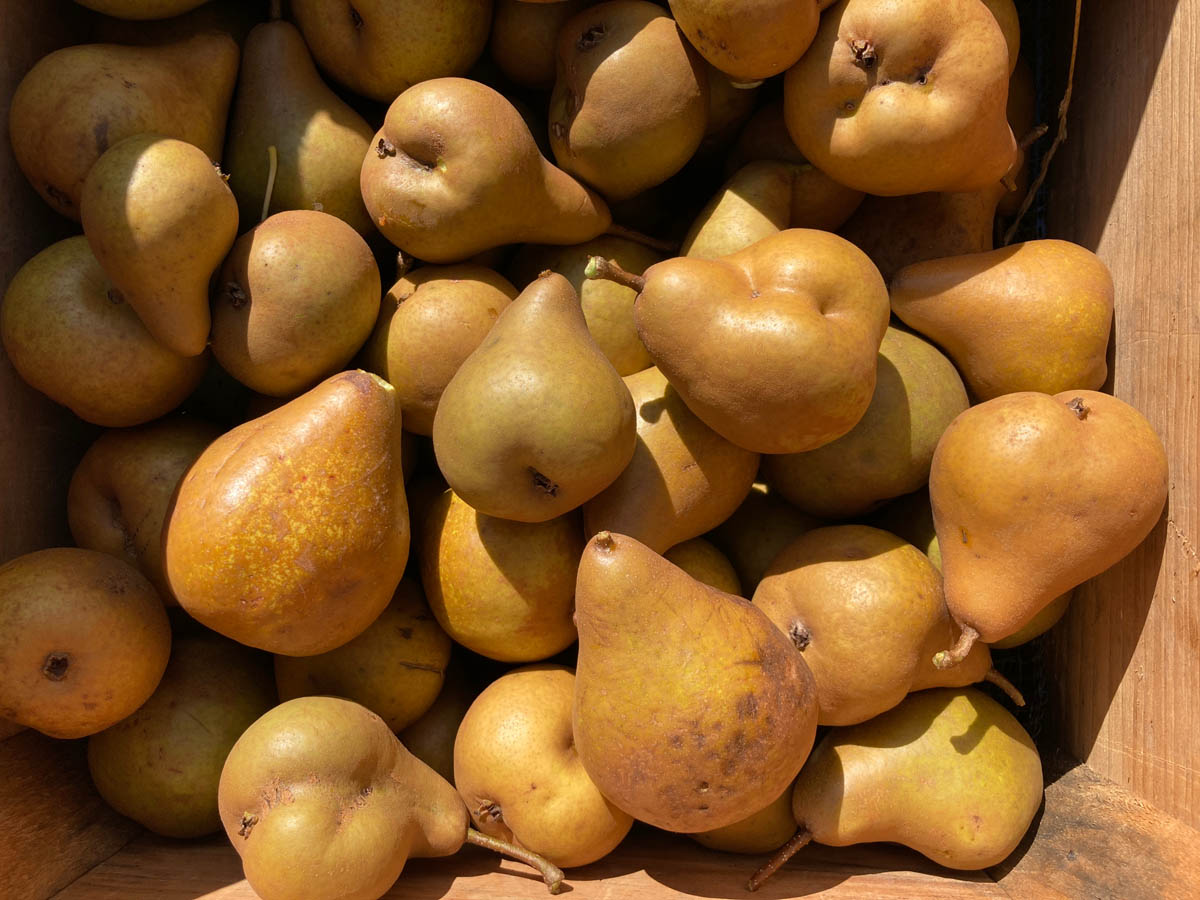
by Sandra Murphy
The cider press rests again in its corner of the farmhouse at Vermont Family Forests’ Wells Farm. Twenty-five gallons of cider—mostly apple, plus a precious few jugs of an ambrosia mix of apple and pear—are stacked in the chest freezer in the Middle Barn, ready to sweeten workshops and events in the coming year. Another five gallons settles in a carboy, fermenting its way toward hard cider. Outside, the fruit trees—more than 50 apple, plus a handful each of pear, plum, and peach—stand bare, next year’s buds clutched tight on twig tips beyond counting.
Despite the hard frost in mid-May, despite the sodden summer that made the farm fields squelch underfoot right through autumn, the trees at Wells Farm fruited abundantly. Not all of them, for sure. Like the trees in forests across Vermont, the fruit trees reflected their individual situation and their individual response to this year’s growing season. Some of the trees didn’t set fruit at all. Others, like the beloved heirloom Roxbury russet, set abundant fruit, but ones that reached just a fraction of their usual size come harvest time. Others grew massive, plentiful, juicy orbs that we had to cut in half to feed into the cider press.

Most years, plenty of apple drops dot the grass beneath the trees. This year though, it was rare to spot a single one. Many mornings a quartet of wild turkeys pecked and plucked among the trees. The hoof prints of white-tailed deer circled every tree, and gleaming mounds of pulpy scat announced the nighttime visits of bears.
What a privilege to share the bounty with these and so many other wild beings. Yellow-bellied sapsucker holes texture nearly every inch of one of the elder apple trees. Why that tree, among the many? And what does the tree make of the meticulous Swiss-cheesing of its bark? Nearby, a handful of apple pulp rests in the wide fork between two branches of the biggest of all the orchard trees. Who ate in the shelter of these branches?


Each time we pressed cider this fall, we spread the fruit pulp—many wheelbarrows full—around the apple trees to feed their roots. And each time, every morsel of pulp disappeared in a day or two. Several years back, master tracker Mike Kessler led a tracking workshop near these fruit trees. He showed us how to get down on the ground and put our fingers into the tracks, to feel the movements expressed in each imprint. To become that animal for a moment. At the base of one of the trees where we had spread the pulp, I slip my fingers into a heart-shaped print and imagine the deer, her snout deep in the fragrant mound of shredded apples, ears alert to the nighttime landscape.

What do fruit trees have to do with what we’re up to at Vermont Family Forests? Every aspect of working with this orchard offers insights into mutually beneficial relationship. Knowing that the domestic apple originated in the hardwood forests of Kazakhstan, we aim to make the trees feel at home in these open fields far from home. We keep the grass at bay as much as possible and mulch their roots with hardwood cuttings to nurture beneficial fungi and hold moisture. In return, their blossoms and fruits nurture the community of life here, including people.
Whether we’re working with a landowner to encourage the health and resilience of native trees or mulching the non-native fruit trees in our orchard or collaborating with a local excavator operator to reduce erosion on a steep forest road, our aim is mutually beneficial relationship. We’re all in this together—we people and every other living and non-living being. How can we thrive together?








